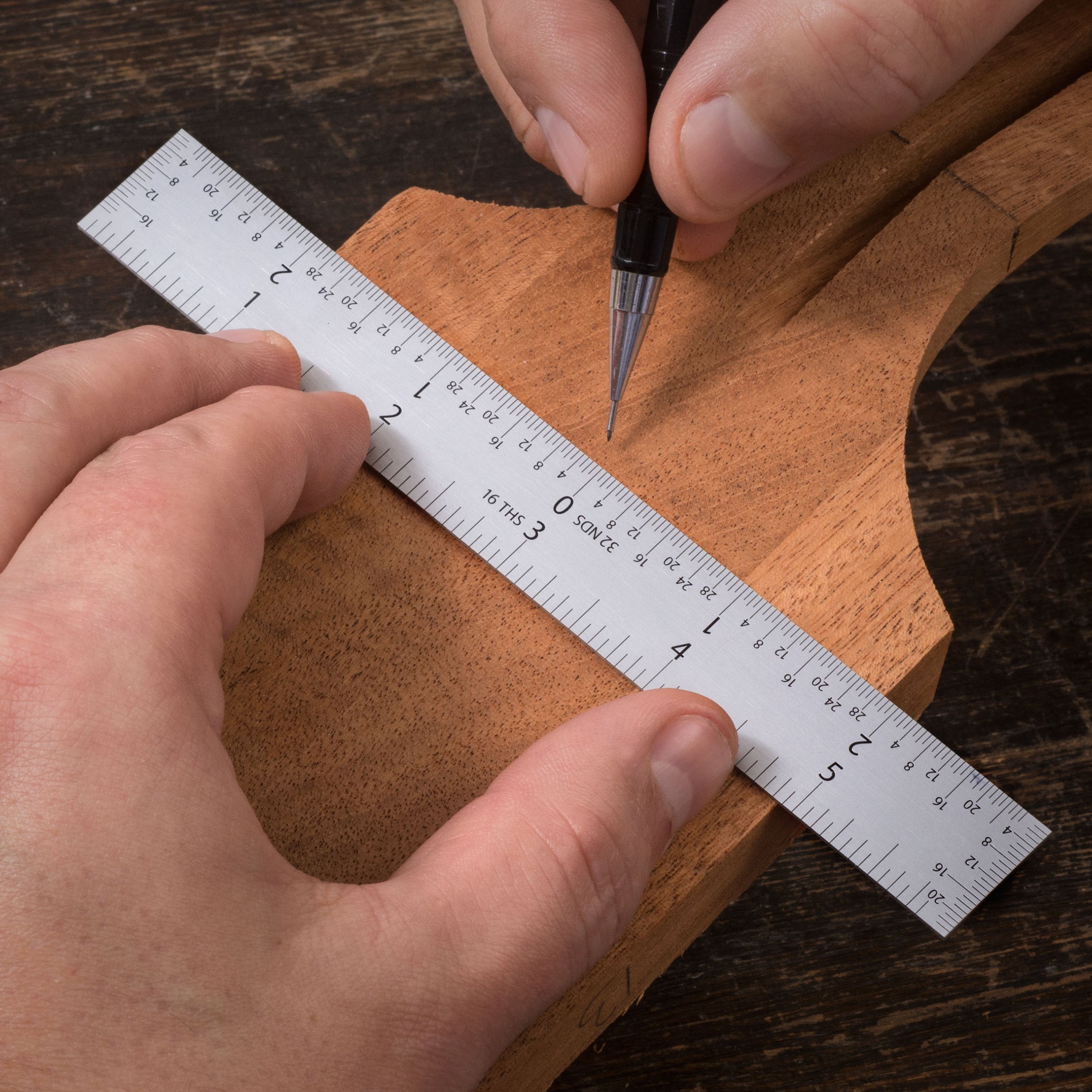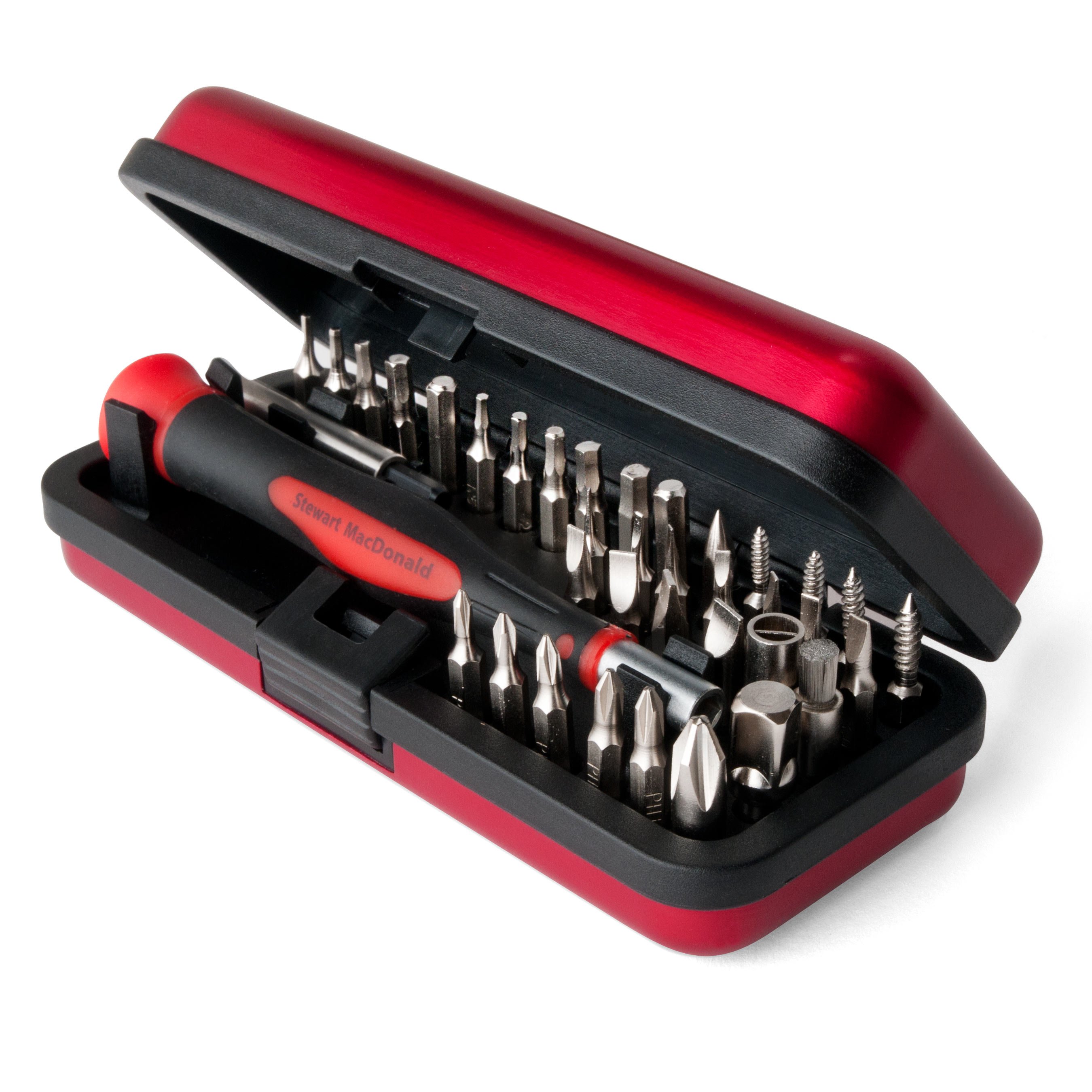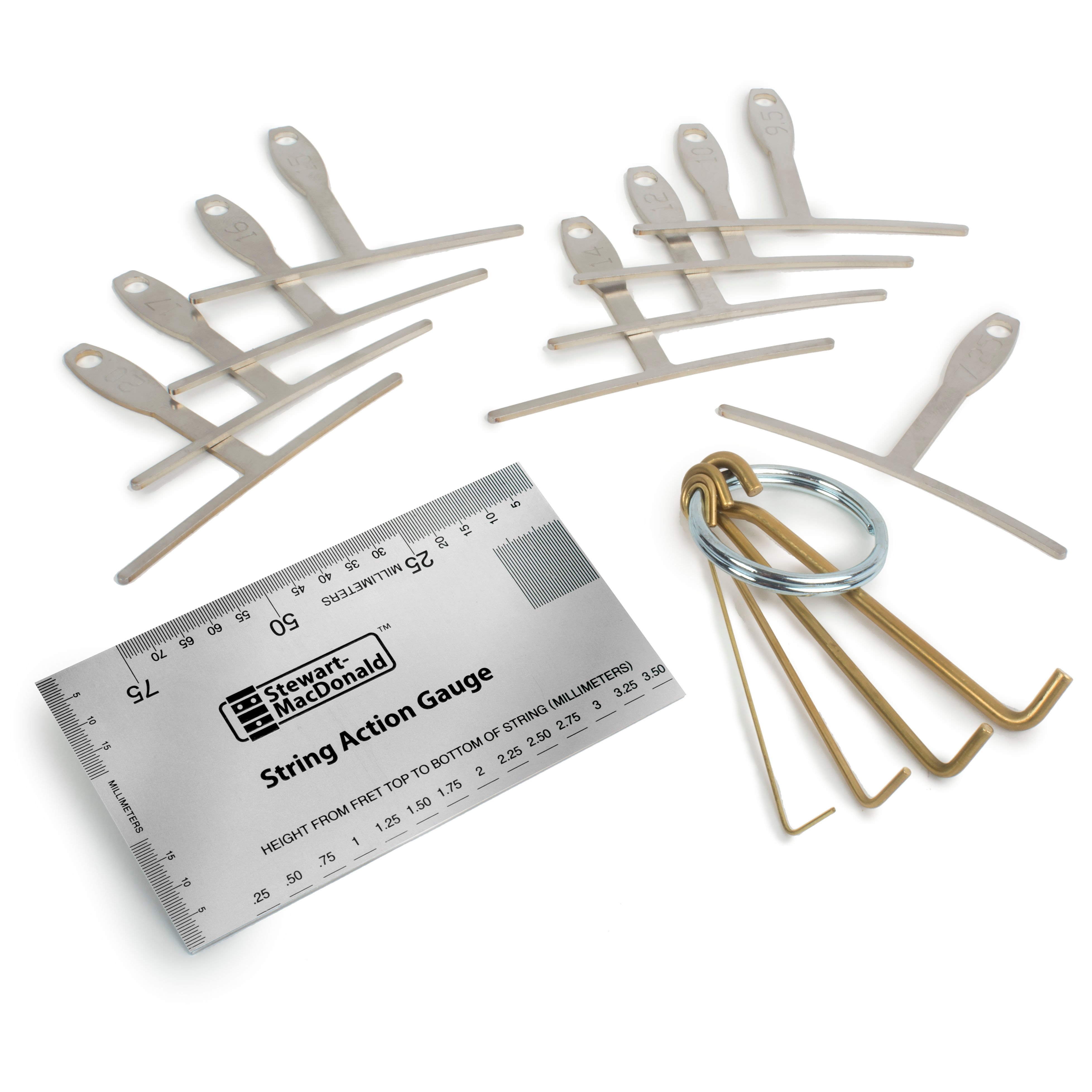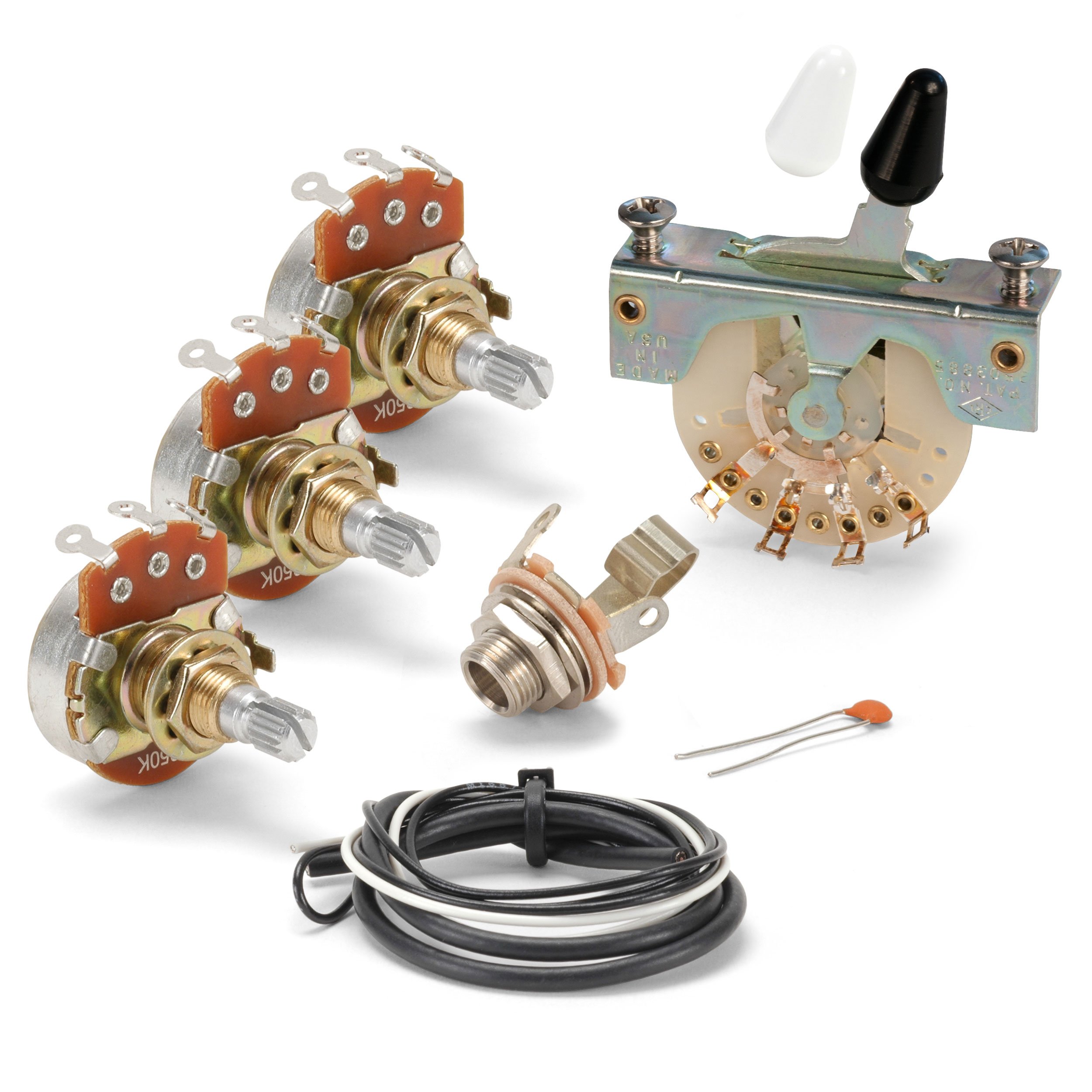How to set the height of your guitar pickups for optimal tone
Issue 324 February 07, 2019
When it comes to setting the height of your guitar's pickups there's no "one size fits all" approach. In this video Erick shows how you can adjust the height of your guitar pickups to fit YOUR playing style.
- Your picking-hand habits make a difference
- How Erick chooses which pickup to adjust first
- Fender factory specs as a starting point
- Why someone else's specs aren't the same as yours
Video Transcription
[on-screen text reads: StewMac tools + ideas for guitarmaking. Adjusting Pickup Height for Perfect Tone]
Erick Coleman: The goal when adjusting the pickups on a Stratocaster is to get even volume when you're switching between the neck, middle and bridge pickups. These settings can vary a little bit depending on the player and their style. The way you strum and pick in relation to the pickups all play a role in achieving even volume when you're switching between all three.
Your picking-hand habits make a difference
Some players will strum over the neck pickup and that'll make the sound of that pickup a little louder and a little more focused than the other pickups. My personal style is I like to rest my hand mostly on the bridge there. That puts my picking pattern somewhere between the middle and bridge pickup. All these aspects of an individual's style all play a part in how the pickup should be set.
In Dan Erlewine's book, How to Make Your Electric Guitar Play Great, you'll see pickup height specs from a handful of great Strat players, including Eric Johnson and Stevie Ray Vaughn, and in those specs, you'll notice that no two players are alike. They all have different pickup heights because they all have very different styles, and you're no different. In order to get the best sound out of your Strat, you need to set up the pickups to suit your style.
Using the Fender factory specs as a starting point
This is my personal guitar. It's a '90s Fernandez, and I just installed a set of StewMac Single-coil Pickups in it, and now I'm going to adjust the height to suit my hamfisted style of playing. As a starting point, we're going to adjust the pickups to Fender factory specs, and then we're going to start tweaking the set up from there.
The first thing I'm going to do is adjust the height of the base sides of the pickup. Fender specs have them all the exact same measurement, which is three 32nds. I'm going to hold the low E string down at the last fret, and I'm going to adjust that up. That's it, right around an eighth of an inch. So you can just dial it up just a little bit. There's my measurement there. Three 32nds. Going to do the same here. And this measurement is the gap that's between the bottom of the string and the top of the pull piece of the pickup.
A little bit more. Close enough for now. And then five 64ths on the treble side. It's way low. And again, you'll notice that I'm holding my high E string down at the last fret when making this adjustment. Okay, now the pickups are adjusted to Fender spec, and that gets us into the ballpark for final adjustment.
Choosing which pickup to adjust first
I like to start by getting a good sound out of my neck pickup and work my way back, and the reason for that is magnetic pull. Because of the neck pickup's location on the body, if you get this pickup too close to the strings, it can cause all sorts of strange and unwanted overtones. People call them wolf tones, or people call it Stratitis. It's not as important with the middle and bridge pickups, because they're better supported by the bridge and are less prone to be pulled down by the magnets.
Making pickup height adjustments
Now for the fun part. I'm going to be making these adjustments in the playing position, because gravity plays a little role in it. When the guitar is laying on its back, especially on the neck rest, the strings are going to be a little higher over the pickups than they are when they are in the playing position. And also to have your amp set up the way you would normally have it. You want to hear your guitar sound the way you like it and you're adjusting the pickups for that guitar sound.
All right. I'm just going to play the neck pickup for a while and see what I think overall. Little muddy on the low end. I'm going to hold the E string down on the last fret and I'm going to bring it up just a little bit, just to see if I can get a little more pronounced sound out of it, but not close enough to introduce any of that magnetic pool we were talking about earlier. I'm going from three 32nds to five 64ths. I'm going to listen to it again a little bit.
I like that better because the low end's a little more pronounced and it's got a little more bite, better attack. I want a little bit more out of the high E, so I'm going to bring it up about the same amount. Probably just about one 64th of an inch. I like it. Both measurements, bass and treble, I like at one 16th of an inch.
Let's move to the middle pickup. Hearing slightly more volume out of the neck pickup than I am the bridge, so I'm going to bring up the middle pickup just a hair. See if we can get that under control a little better. Let's give this listen. Good match in volume when we're switching between the two. I'm calling that good. Let's look at that measurement a little closer and see what we ended up with. Five 64ths on the bass side, three 64ths on the treble side. Considerably different than stock Fender measurements.
Switch to the bridge pickup. That's my favorite pickup, so I'm going to be focusing on this one a little more, because it's what I use mainly. It's a little weak sounding compared to the other two, so I'm going to bring it up and see what we end up with. Okay.
That's a good even sound. With the bridge pickup, we ended up with a 16th on the bass side between the bottom and the string and the top of the pull piece, three 64ths on the treble side. I think we're there. I have great individual sounds out of each of these pickups, and I have a good even volume when switching between all three. Totally what I was looking for.
Follow these steps and you can dial in your own guitar for your own playing style to sound the best that it possibly can, too. Subscribe to our YouTube channel, because we've got a lot more where this came from.





